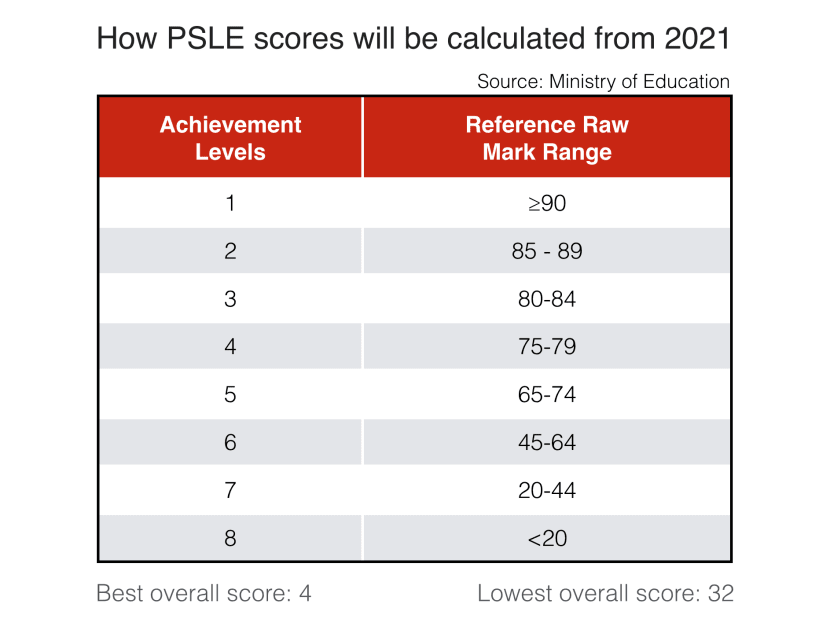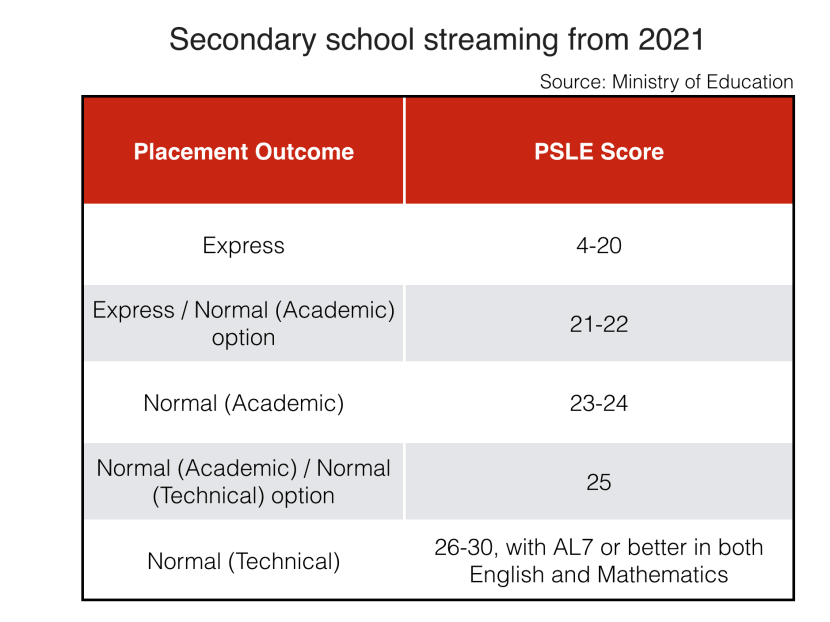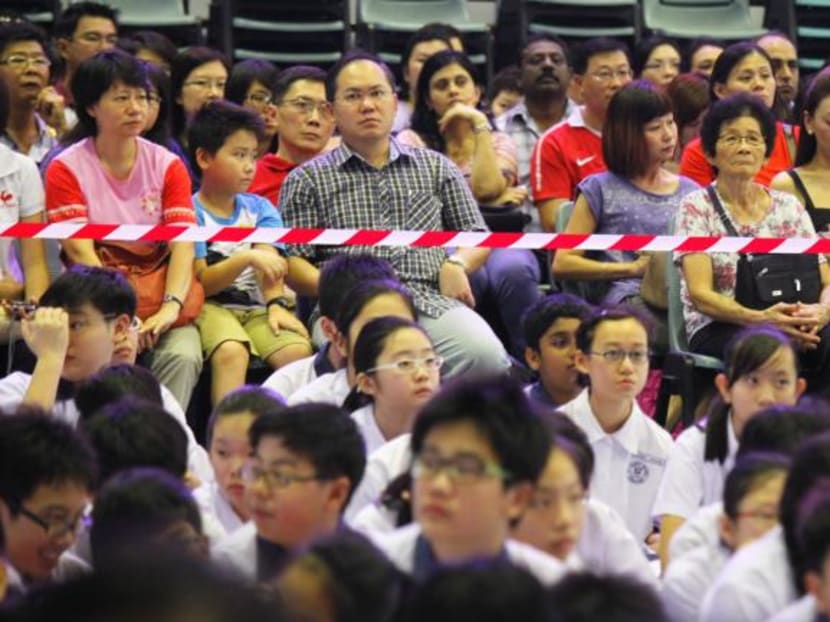New PSLE system: How MOE will determine students' Sec One posting
SINGAPORE — Academic merit will still come first in determining which secondary school a student is posted to, but where students’ Primary School Leaving Examination (PSLE) scores are identical and a “tie-breaker” is needed, the order in which he or she listed their choices will be a determining factor.
SINGAPORE — Academic merit will still come first in determining which secondary school a student is posted to, but when students’ Primary School Leaving Examination (PSLE) scores are identical and a “tie-breaker” is needed, the order in which they listed their choices will be a determining factor.
Currently, in such situations, the Ministry of Education (MOE) will look at citizenship first, followed by computerised balloting. Under the new PSLE system taking effect in 2021, choice order will be the second determining factor in a “tie”, followed by balloting.
And to help parents choose schools in the first year under the new system, the MOE will be providing simulated cut-off points based on the previous year’s Secondary One Posting exercise, although the actual cut-off points may differ depending on how students perform.
Under the new system, the T-scores — where students’ performances are ranked against their peers — will be done away with. Instead, students’ exam scores for each subject will fall into one of eight Achievement Levels (ALs), pegged to a number of points. A student’s overall PSLE score will be the sum of the ALs scored in all four subjects.
Those with a PSLE score between four to 20 points will qualify for the Express Stream, while those scoring 23 to 24 will be in the Normal (Academic) Stream. Those scoring 21 and 22 points can choose to be in the Express or N(A) streams.
Foundation-level subjects will also be scored using ALs.
For admission to Special Assistance Plan (SAP) schools, among students with the same PSLE score, those with a better grade in Higher Chinese Language will be given priority for admission, before the three “tie-breakers” of citizenship, choice order and balloting.
Secondary schools with affiliated primary schools can continue to give priority to students from those schools. The MOE said it is reviewing the details and engaging affiliate schools before releasing more information.
(Click to enlarge)

Commenting on the changes yesterday, Acting Education Minister (Schools) Ng Chee Meng said that with the new system, the schools will be less differentiated by the cut-off points.
“With this, we hope parents and students will be afforded more choices to choose from so that the secondary schools will be the best fit for the child in terms of his interests and learning needs,” he told reporters.
On how this would affect parents’ school choices and fit into the vision of every school (is) a good school, he said the order of choices now is a tie-breaker. “We hope that parents will be more conscious of their children’s strengths and learning needs, and factor this as an important factor in selecting the best school that best fits their child,” he said.
(Click to enlarge)

The MOE said that the proportion of students who have to undergo balloting to determine their posting will remain largely unchanged under the new system.
Mr Ng said estimates based on simulations of past cohorts showed that at most, one in 10 will require balloting.
The new system, he added, is “the best balance between sufficiently differentiating the students results so we can match the best secondary school to (their) learning needs and also minimise the level of balloting”.







